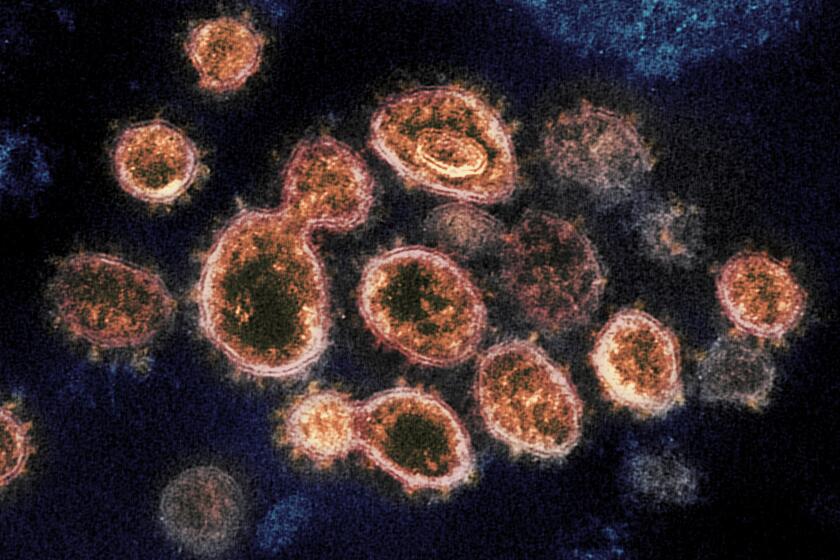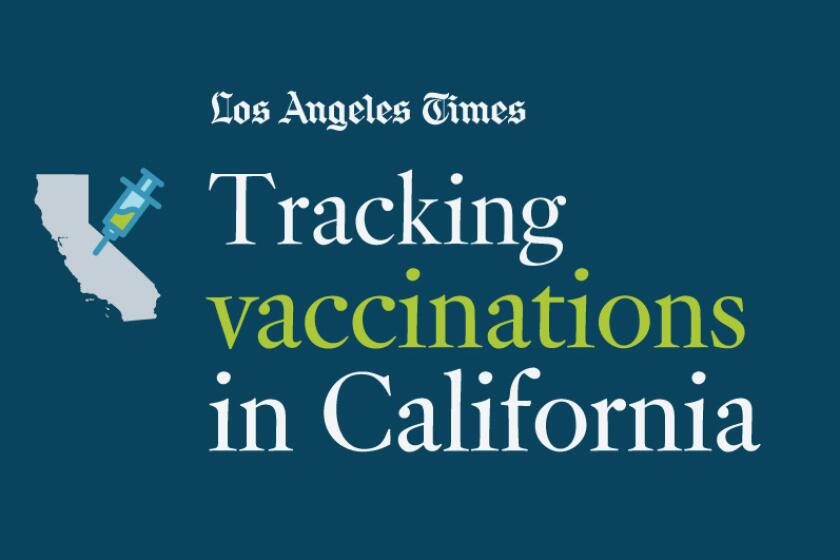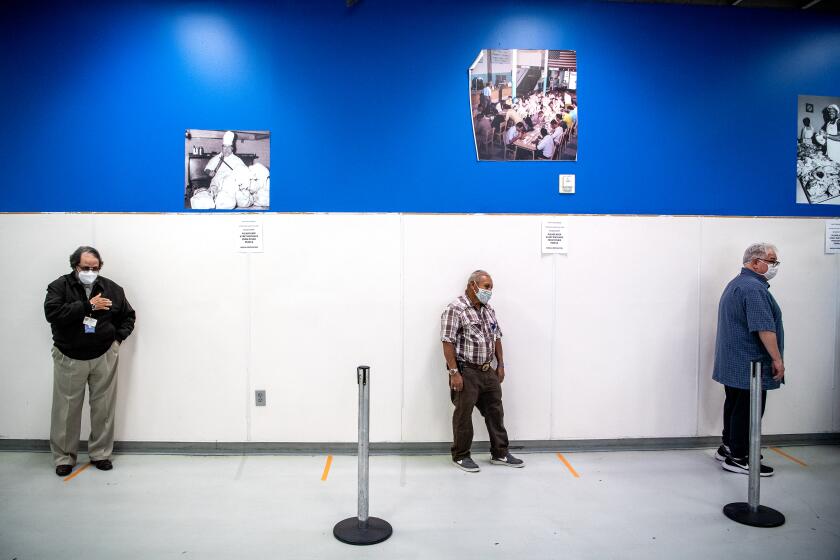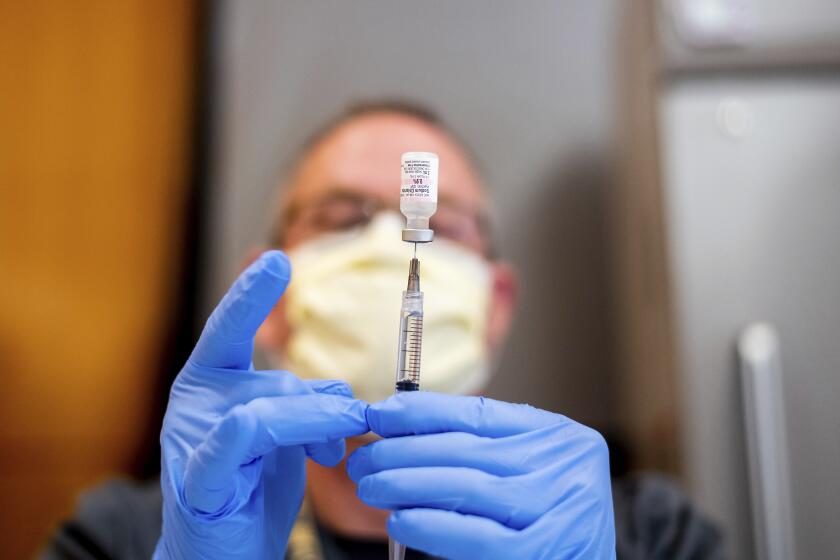The South African coronavirus variant is in California. What you need to know
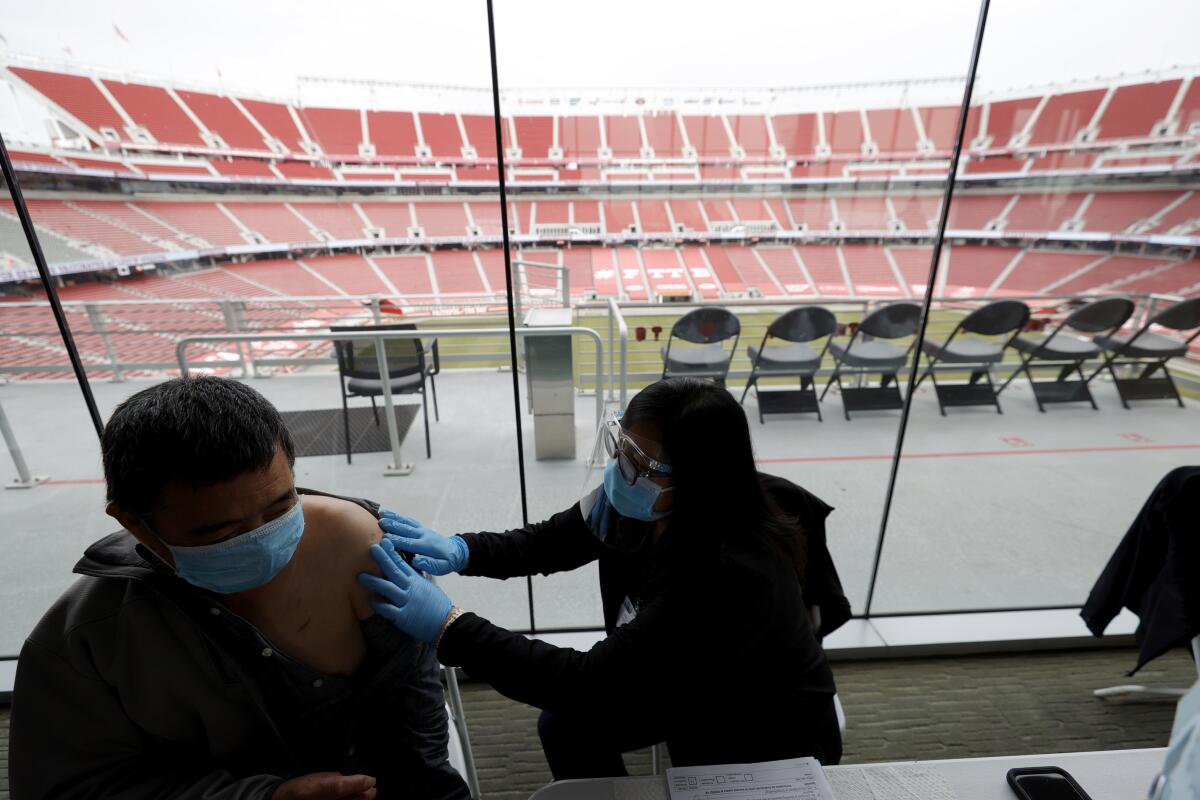
The coronavirus variant first identified in South Africa has been detected in California.
The variant, known as B.1.351, has health officials concerned because the current COVID-19 vaccines â one from Moderna and the other from Pfizer/BioNTech â are generally believed to be less effective against this strain.
The South Africa variant has been identified in two people, both in the Bay Area â one in Santa Clara County and another in Alameda County, Gov. Gavin Newsom said Wednesday. Nationally, there are at least nine other cases confirmed in three East Coast states: Maryland, Virginia and South Carolina.
The South Africa variant is distinct from another concerning strain, first identified in Britain, known as B.1.1.7. That strain is believed to be 50% to 70% more transmissible than the conventional variety of the coronavirus and is forecast to become the dominant strain of the virus nationwide by the end of March.
The good news, however, is that available COVID-19 vaccines are clearly effective against the U.K. variant, Dr. Anthony Fauci, the U.S. governmentâs top infectious disease expert, said Wednesday.
The U.K. strain is already the variant most frequently found in the U.S., Dr. Rochelle Walensky, the director of the U.S. Centers for Disease Control and Prevention, said Wednesday. Itâs probably comprising between 1% and 4% of cases in the U.S., she said, but the proportion is likely higher in some states.
The U.K. strain has been detected in 932 people in the U.S. in 34 states. In California, 159 cases have been identified, Newsom said, including in Alameda, Los Angeles, Orange, Riverside, San Bernardino, San Diego, San Mateo and Yolo counties, according to the state Department of Public Health.
California is also studying two so-called West Coast variants, known as B.1.427 and B.1.429, which have been identified in more than 1,000 people in the state. The variants have comprised a large percentage of genomically sequenced virus samples analyzed in recent months, and scientists are studying them to determine whether they are more contagious than the conventional variety of the coronavirus.
California has not yet detected another concerning strain first identified in Brazil, known as P.1, which has been identified in two people in Minnesota and one person in Oklahoma, but has detected a closely related variant, also from Brazil, known as P.2, at a laboratory at Stanford University.
Hereâs a closer look at what you need to know about the South Africa variant:
Confusion over the terms âvariantâ and âstrainâ predate this coronavirus. It seems virologists never got around to defining their terms.
Currently available vaccines are less effective
Studies show âthereâs about a five- to sixfold diminution in efficacyâ of currently available vaccines against the South Africa strain, Fauci said, though he said the shots are still generally protective against it. âSo there is a degree of protection, even though itâs diminished somewhat,â he said.
While the Moderna and Pfizer vaccines are less effective in preventing mild to moderate cases of COVID-19, the good news, Fauci said, is that the vaccines still offer âsubstantial protection; in fact, with no hospitalizations or deaths in vaccinated individuals who were infected with the [South Africa variant].â
Scientists are already working on potential booster shots in case they are needed to protect against the South Africa variant.
Experts say about most Americans will need to be vaccinated to bring the coronavirus pandemic under control. Track Californiaâs progress toward that goal.
Santa Clara County case
The two cases of the South Africa variant publicly disclosed in California on Wednesday occurred among two unrelated people who had recently returned from international trips and were adhering to quarantines, Dr. Sara Cody, the Santa Clara County public health director and health officer, said.
The Santa Clara County case involved âan adult who had traveled internationally, returned in mid-Januaryâ and then followed a mandatory order that requires people entering the county from 150 miles away to quarantine for at least 10 days.
Several days after returning to Santa Clara County, the person developed symptoms and was tested. Officials learned Wednesday morning that the patient was infected with the South Africa variant.
âThis individual had international travel, returned to our county and was 100% compliant with that â stayed in their apartment â and several days after returning, then developed symptoms, got diagnosed,â Cody said. âSo the good news is that at no time during their infectious period were they in contact with anyone outside their household.â
The only time the person was contagious was during the self-quarantine period at home, Cody said. The person did not require hospitalization and has fully recovered.
There were few additional details available for the Alameda County case and it remains under investigation, said Dr. Nicholas Moss, the Alameda County health officer. That patient is no longer infectious, Moss said, based on the date on which the lab test was performed.
The emergence of new virus variants will complicate efforts to end the COVID-19 pandemic, scientists say. But theyâre confident weâll still get there.
Staying safe
The U.S. genomically sequences only a tiny fraction of new coronavirus samples, so the nation may be slow to detect new variants as they proliferate.
âIn some ways, we sort of have to assume that perhaps these variants of concern are already circulating; we just donât know to what extent,â Cody said. âSo we need to adapt and change our behavior and really double down on all those important things that weâre doing, like wearing masks, not gathering inside with anyone outside of our household and keeping our distance.â
The variantsâ arrival also underscores how risky it is to travel and how important it is to quarantine following travel.
Federal officials have continued to sound the alarm for weeks about the dangers of nonessential travel. âAvoid crowds and travel,â the CDCâs Walensky said.
California remains under a travel advisory, with the state Department of Public Health warning against nonessential travel, including for tourism or recreation, to any part of the state more than 120 miles from home, or to other states or countries. The advisory also strongly discourages nonessential travelers from other states and nations from visiting.
âAvoiding travel reduces the risk of virus transmission, including by reducing the risk that new sources of infection and, potentially, new virus strains will be introduced to California,â the advisory says.
The advisory asks all people arriving in California or returning to the state to self-isolate for 10 days, meaning they should stay at home and have food delivered. The recommendation does not apply to healthcare workers, emergency responders or people who routinely cross state or national borders for essential travel.
Coronavirus mutations are on the rise. The longer it takes to vaccinate people, the more likely weâll see a variant that eludes our tests, treatments and vaccines.
Future surges still possible
Moss, the Alameda County health officer, said there continues to be a risk of future pandemic surges, but they may look different from the devastating autumn and winter surge.
âWe certainly should expect that more surges will come. They may look different,â Moss said. âWe will be moving out of winter here in California; more people will have received vaccine or will have had past infection and that could affect things.â
More to Read
Sign up for Essential California
The most important California stories and recommendations in your inbox every morning.
You may occasionally receive promotional content from the Los Angeles Times.
